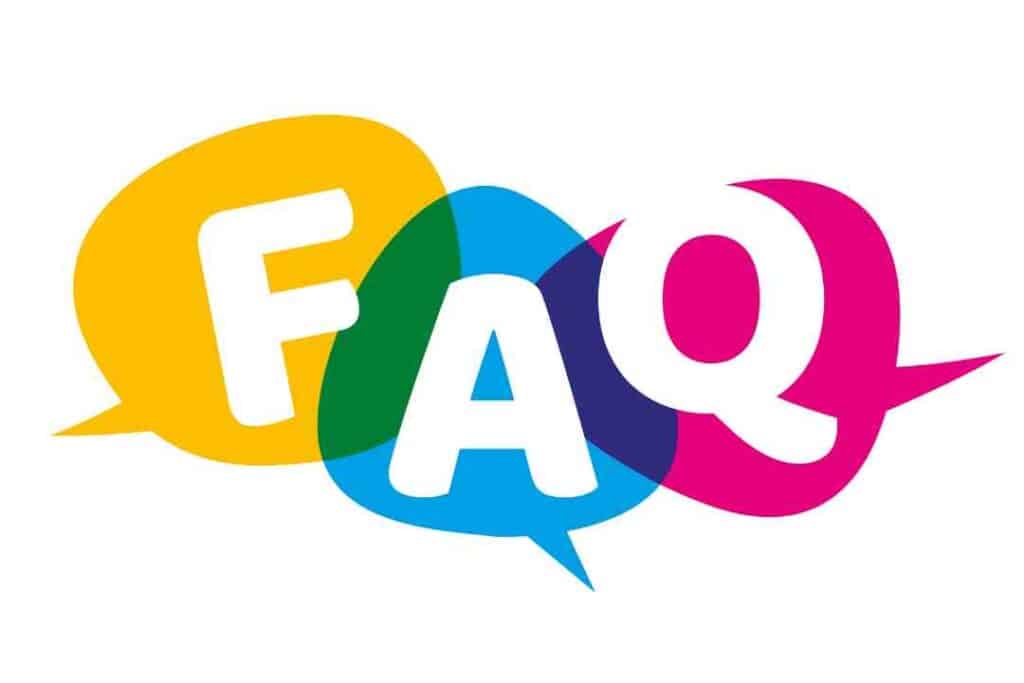Improving Interteam Communication With CRM

Customer Relationship Management
Effective communication is crucial for the success of any organization. In today’s fast-paced business environment, where teams are often spread across different locations and time zones, interteam communication can be a challenge. However, with the right tools and strategies in place, organizations can overcome these barriers and foster better collaboration among teams. One such tool that has proven to be highly effective in improving interteam communication is Customer Relationship Management (CRM) software.
What is CRM?
CRM stands for Customer Relationship Management. It is a software solution that helps businesses manage their interactions and relationships with customers and prospects. CRM software provides a centralized database where all customer information, including contact details, communication history, and purchase history, can be stored and accessed by different teams within the organization.
While CRM software is primarily used for managing customer relationships, its benefits extend beyond just the sales and marketing teams. By implementing a CRM system, organizations can improve interteam communication and collaboration in several ways.
1. Centralized Information
One of the key advantages of using CRM software is that it provides a centralized repository for all customer information. This means that all teams, including sales, marketing, customer support, and even finance, can access the same up-to-date information about customers and prospects.
For example, when a salesperson interacts with a customer, they can log all the details of the conversation in the CRM system. This information can then be accessed by the marketing team to tailor their messaging and campaigns, by the customer support team to provide personalized assistance, and by the finance team to track payment history and outstanding invoices.
By having a single source of truth, teams can avoid miscommunication and duplication of efforts. This leads to better coordination and collaboration among different teams, ultimately improving interteam communication.
2. Seamless Collaboration
CRM software also enables seamless collaboration among teams by providing features such as task management, shared calendars, and document sharing. These features allow teams to work together on projects and initiatives, regardless of their physical location.
For example, the sales and marketing teams can collaborate on lead generation campaigns by sharing campaign calendars and tracking the progress of leads in the CRM system. The customer support team can collaborate with the sales team by accessing customer communication history and providing timely assistance. The finance team can collaborate with the sales team by accessing payment information and following up on outstanding invoices.
By facilitating collaboration, CRM software breaks down silos between teams and promotes a culture of teamwork and shared responsibility. This leads to improved interteam communication and better overall performance.
3. Automated Workflows
CRM software can also streamline interteam communication through automated workflows. Workflows are predefined sequences of actions that are triggered based on specific events or conditions. By setting up workflows in the CRM system, organizations can automate routine tasks and ensure that information flows smoothly between teams.
For example, when a new lead is added to the CRM system, a workflow can be triggered to notify the sales team. The sales team can then follow up with the lead and update the CRM system with the outcome of the interaction. If the lead converts into a customer, another workflow can be triggered to notify the customer support team and provide them with the necessary information to onboard the new customer.
By automating these processes, organizations can reduce manual errors, save time, and improve interteam communication. Teams can focus on their core responsibilities instead of spending time on administrative tasks, leading to increased productivity and efficiency.
4. Real-time Analytics
CRM software provides real-time analytics and reporting capabilities that can help teams make data-driven decisions and improve interteam communication. By analyzing customer data and performance metrics, teams can identify areas for improvement and take proactive measures to address them.
For example, the sales team can analyze the conversion rates of leads generated by the marketing team and provide feedback on the quality of leads. The marketing team can analyze the response rates of their campaigns and make adjustments to improve engagement. The customer support team can analyze customer satisfaction scores and identify areas where they can provide better support.
By sharing these insights with other teams, organizations can foster a culture of continuous improvement and collaboration. Teams can align their strategies and goals based on data, leading to better interteam communication and overall business success.
Case Study: XYZ Corporation
XYZ Corporation, a global software company, implemented a CRM system to improve interteam communication and collaboration. Prior to implementing the CRM system, teams were using different tools and spreadsheets to manage customer information, leading to data inconsistencies and communication gaps.
By centralizing customer information in the CRM system, XYZ Corporation was able to provide all teams with a single source of truth. Sales, marketing, customer support, and finance teams could access the same up-to-date information, leading to better coordination and collaboration.
The CRM system also enabled seamless collaboration among teams. The sales and marketing teams could work together on lead generation campaigns, while the customer support team could provide personalized assistance based on the customer’s communication history. The finance team could track payment history and follow up on outstanding invoices.
Furthermore, XYZ Corporation set up automated workflows in the CRM system to streamline interteam communication. Workflows were triggered to notify teams of new leads, customer onboarding, and other important events. This reduced manual errors and ensured that information flowed smoothly between teams.
By leveraging the real-time analytics and reporting capabilities of the CRM system, XYZ Corporation was able to make data-driven decisions and improve interteam communication. Teams could analyze customer data and performance metrics to identify areas for improvement and align their strategies and goals based on data.
As a result of implementing the CRM system, XYZ Corporation experienced improved interteam communication, increased productivity, and better overall performance. Teams were able to collaborate more effectively, leading to higher customer satisfaction and business growth.
Get Your FREE 14-Day Trial and Take Your Business To The Next Level with an All-In-One Sales and Marketing Platform for businesses, agencies and marketers.
Improving interteam communication is essential for the success of any organization. By implementing a CRM system, organizations can centralize customer information, facilitate seamless collaboration, automate workflows, and leverage real-time analytics to improve interteam communication.
CRM software provides a centralized repository for all customer information, enabling teams to access the same up-to-date information. It also provides features such as task management, shared calendars, and document sharing, facilitating collaboration among teams. Automated workflows streamline interteam communication by automating routine tasks and ensuring that information flows smoothly between teams. Real-time analytics and reporting capabilities help teams make data-driven decisions and improve interteam communication.
Case studies, such as XYZ Corporation, demonstrate the positive impact of CRM on interteam communication. By implementing a CRM system, XYZ Corporation experienced improved coordination, collaboration, and overall performance.
In conclusion, CRM software is a powerful tool for improving interteam communication. Organizations that leverage CRM software can overcome communication barriers, foster collaboration, and achieve better business outcomes.
Visit https://SaasExpert.ca – Your All-In-One Sales and Marketing Platform for small businesses, agency owners, and marketers.
Frequently asked questions about Improving Interteam Communication With CRM.

Q1: How can CRM systems enhance interteam communication within my organization? 🚀
A1: CRM (Customer Relationship Management) systems are a powerful tool for improving interteam communication. Here’s how they achieve this:
Centralized Information: CRM systems provide a single repository for all customer-related data, accessible to all teams. This ensures that everyone is on the same page regarding customer interactions, history, and needs.
Real-time Updates: Teams can instantly access the latest information about customers, eliminating the need for back-and-forth emails or meetings to stay informed.
Task Assignments: CRM allows for the assignment of tasks and responsibilities within the system, streamlining communication on who is responsible for what.
Automated Notifications: CRM can send automated notifications and alerts, ensuring that teams are promptly informed about important updates or changes.
By fostering these practices, CRM enhances interteam communication, leading to better collaboration and more effective customer engagement. 👥📊
Q2: What features should I look for in a CRM system to optimize interteam communication? 🧰
A2: To optimize interteam communication, consider CRM systems with these key features:
Shared Contact Database: A shared contact database ensures that everyone has access to up-to-date customer information.
Team Collaboration Tools: Look for CRM systems that offer team collaboration features such as shared calendars, task assignments, and document sharing.
Chat Integration: Some CRM platforms integrate chat and messaging tools, allowing teams to communicate within the CRM environment.
Workflow Automation: CRM can automate routine communication processes, such as follow-up emails or reminders, ensuring efficient communication.
Customization: The ability to customize the CRM to your organization’s specific communication needs is essential.
Choosing a CRM with these features will go a long way in optimizing interteam communication. 📅🗂️
Q3: Can CRM help break down communication barriers between sales, marketing, and customer support teams? 🚫
A3: Absolutely! CRM is a powerful catalyst for breaking down communication barriers between these teams. Here’s how:
360-Degree Customer View: CRM provides a comprehensive view of each customer, including their interactions with sales, marketing, and support. This helps teams understand customer history and needs, fostering collaboration.
Lead Nurturing: CRM enables marketing to pass qualified leads to sales automatically, aligning marketing efforts with sales goals.
Feedback Loops: CRM captures feedback from customer support interactions and feeds this information back to marketing and sales, helping refine strategies and product offerings.
By promoting cross-functional visibility and collaboration, CRM bridges gaps between teams, leading to a more unified approach to customer engagement. 👥🤝
Q4: How does CRM enhance communication with customers across various touchpoints? 🌐
A4: CRM empowers organizations to enhance communication with customers across multiple touchpoints:
Personalization: CRM systems store customer preferences and behaviors, enabling personalized interactions across email campaigns, sales calls, or customer support.
Automation: CRM automates routine communication tasks, such as sending welcome emails, follow-ups, or appointment reminders, ensuring consistent and timely interactions.
Multi-Channel Integration: CRM can integrate with various communication channels, including email, social media, and live chat, enabling seamless, omnichannel communication.
Data Analysis: CRM analyzes customer data to identify communication trends, helping teams adjust their strategies for better engagement.
By leveraging CRM, businesses can deliver a consistent and personalized experience to customers, regardless of the touchpoint, leading to stronger relationships. 📧📱
Q5: What are the best practices for implementing CRM to improve interteam communication? 🌟
A5: Implementing CRM effectively to improve interteam communication involves several best practices:
Clearly Defined Objectives: Start with clear objectives for CRM implementation, focusing on how it will enhance communication and teamwork.
User Training: Provide comprehensive training to ensure all team members understand how to use the CRM system efficiently.
Data Standardization: Establish guidelines for data entry and usage to maintain data quality and consistency.
Regular Updates: Continuously update and customize the CRM system to meet changing communication needs.
Feedback Mechanisms: Establish feedback mechanisms with teams to address concerns and make necessary adjustments.
By following these best practices, organizations can fully leverage CRM to strengthen interteam communication, resulting in improved collaboration and more effective customer engagement. 🌟🤝






